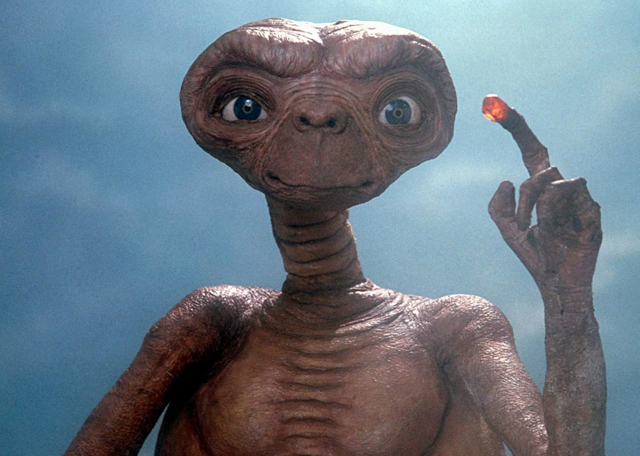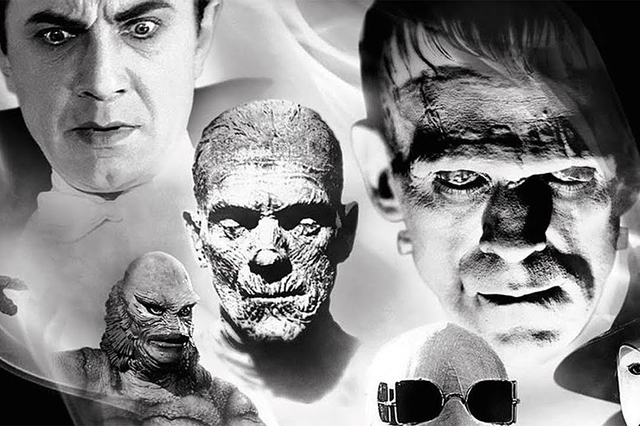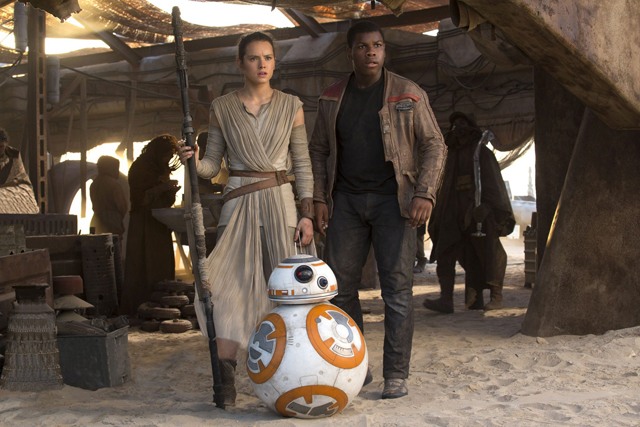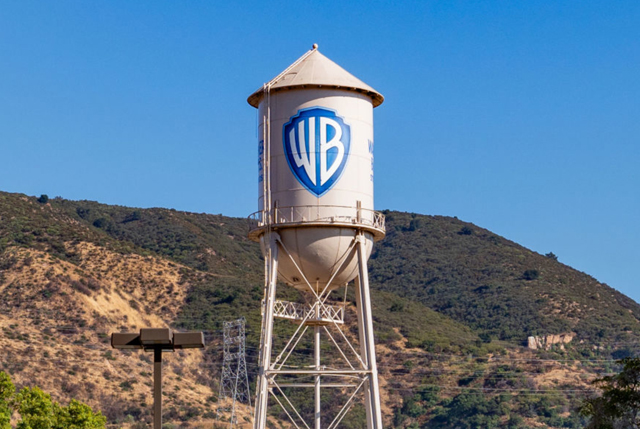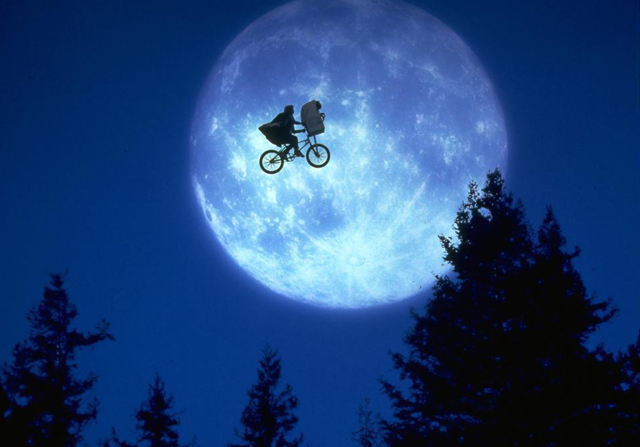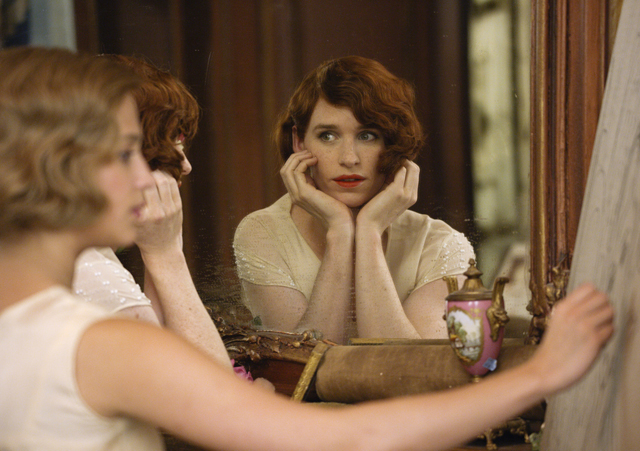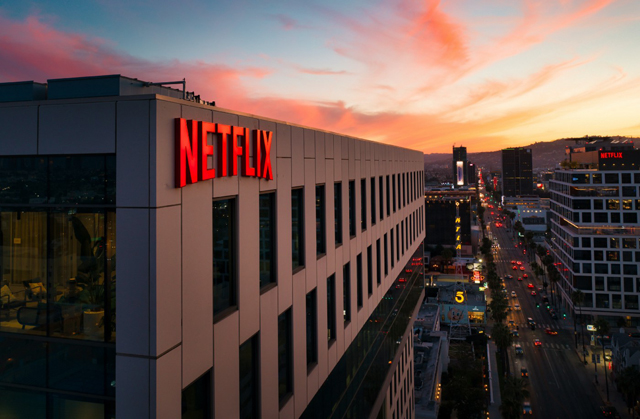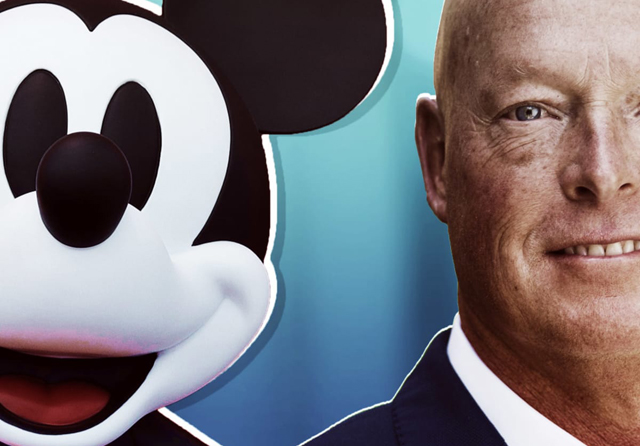
It has to be one of the most stressful jobs in all of media to take on the role of CEO of the Walt Disney Company. Disney has in all of it’s nearly 100 years of existence propelled itself to become the largest media company in the entire world. It not only is in the business of movie making, but it also is a company with deep roots in consumer goods, theme parks, travel and hospitality, and many more avenues of commerce as well. Being the CEO of a company like that must truly be a jack of all trades with knowledge of how to run so many diverse department all at once. But being the CEO of the Disney company also has another aspect that proves to be an extra layer of pressure on the job. Every person who rises to that role does so still within the long cast shadow of the company’s charismatic founder. Walt Disney truly was a unique individual in the history of Hollywood. One of the industry’s biggest risk takers, Disney managed to find a way to turn his little cartoon studio and make it into one of the most valuable names in all of entertainment. When he suddenly succumbed to his secret battle with cancer in 1966, it left a major vacancy that honestly could never be filled again. Walt’s brother Roy held the company together up until the opening of Walt Disney World in 1971, and he passed away soon after himself. The time afterwards became one of the lowest points in the company’s history, but fresh outside talent brought into the studio in the form of Michael Eisner as the new CEO in the 1980’s ushered in a new era of growth. Eisner would oversee a prosperous time in the company, but over time he began to also become overwhelmed by the duties the job required. His successor, Bob Iger, however managed to guide Disney to new heights with major acquisitions like Marvel and Lucasfilm, and was proclaimed as the best head of the company since Walt himself. Unlike many other Disney CEO’s, Iger handed over the reigns of the company to a new successor while still on top. However, as we would see, a whole different story would play out with his hand picked successor, Bob Chapek, stepping into the role.
Bob Chapek began working for the Walt Disney Company in 1993 as part of the Home Entertainment department. A large part of his success in this department came from his push to move Disney into digital entertainment, which at the time was DVD’s and later Blu-ray. He’s also the guy who created the concept of the “Disney Vault” which was an excuse Disney would use to pull some of their movies out of circulation after a few years, thereby increasing demand for newer editions of the same movie down the line. You can credit him for the multiple times you’ve bought copies of the same Disney classics through their multiple re-releases, if you’re that kind of Disney fan. His success in home video eventually got him promoted to President of Consumer Products in 2011. This was an especially good time to take on that role, as it was around this period that Disney acquired Marvel and Star Wars, which gave Chapek and his team multiple new IP’s to merchandise. In 2015, Chapek was then moved to the head of Parks and Resorts, a role that was going to be very important in the years that followed as Disney was preparing big projects like Shanghai Disneyland and the opening of Pandora-The World of Avatar in Disney World’s Animal Kingdom, as well as the construction and opening of Star Wars: Galaxy’s Edge in both Disneyland and Disney World. While Chapek was able to manage these projects to help them complete on schedule, he was also criticized for neglecting other budgeting areas of the park experience, namely cast member salaries and maintenance costs. Still, CEO Bob Iger was pleased with how well Bob Chapek managed the roll outs of these major projects and decided on him to succeed in the position of CEO once Iger’s contract was up in 2020. For Iger, he believed it was the right time to go, as Disney had grown to colossal heights under his leadership and that a budget minded person like Chapek was the steadiest hand to take the wheel of the ship into the future. However, neither of them really knew what that future would be like.
Bob Chapek’s ascendency into the role of CEO of the Walt Disney Company could not have occurred at a worse time for anyone. The turnover from Iger to Chapek happened mere weeks before the outbreak of the Covid-19 pandemic, which put immediate and overwhelming pressure on all parts of the world economy, including the Walt Disney Company. Movie theaters had to close, so there was no box office revenue to be had. Even worse, all theme parks, the biggest piece of Disney’s corporate pie, were forced to remain closed in order to stop the spread of the virus. The Disney Company under Iger was also ending it’s run with a massive amount of debt due to the acquisition of 20th Century Fox in the last year as well as the infrastructure needed to launch the new streaming platform Disney+ in 2019. Chapek was given the unenviable task of steering the company forward even as the world itself was falling apart. No money coming in from box office receipts or theme park passes meant left Chapek with only one avenue to keep the company from losing so much of what it built up; boosting consumer confidence in Disney’s future. He did so through drastic expansion of the still in it’s infancy Disney+. Projects that were initially meant for theaters were turned into streaming exclusives, with the biggest titles like the Mulan (2020) remake getting a special Premiere paid access presentation. It may have been a droplet in the bucket of Disney’s usual yearly profits, but it allowed investors to be convinced that Disney still had the potential to remain at the top even in the face of the effects of the pandemic. Indeed, Disney’s subscriber growth in the pandemic economy far outpaced it’s competitors and Disney’s stock price remarkably hit it’s highest point during this time period. As the year went on, Chapek made further choices to bring high in demand programing like the filmed version of the musical Hamilton (2020) as well as Pixar’s Soul (2020) exclusively to Disney+. The same strategy continued into the following year, as the theatrical market was slow to recover. But, after steering the company through the rough pandemic economy, Chapek needed to convince the market that he would be able to make good on the promise of continued growth through a recovery economy that followed.
It was in the year of 2021 that cracks began to form in Chapek’s tenure as CEO of the Disney company. Where the market first began to become aware of Bob Chapek’s short-comings as a CEO probably came during the public feud that erupted with actress Scarlett Johannsson of Marvel’s Black Widow fame. Johannsson was finally getting a solo film within the Marvel franchise after over a decade of playing the iconic Marvel hero. However, when the contract was written up during the development of the Black Widow (2021) movie, it included a share of the movie’s box office profit as part of her compensation. When the movie was ultimately released, it was given a partial theatrical run with a simultaneous Premiere Access on Disney+. To Scarlett and her team, this looked like an attempt to stifle the box office portion of her contract by siphoning some of that revenue into the streaming portion, which was not a part of the original contract. Johannsson rightfully took Disney to court over this as she never consented to a split premiere for the movie and that she was entitled to some of the revenue from the streaming pot. Chapek, for some misguided reason, tried to paint Scarlett as an out of touch elite during a pandemic, but fans didn’t buy it at all. Instead, Chapek looked like the greedy one, and fans demanded that Disney settle to give Scarlett exactly what she was demanding. This was Bob Chapek’s first public stumble, but it wouldn’t be the last. This immediately put a wedge between him and the top brass at Marvel, since Marvel Studio head Kevin Feige needed to maintain good relations with his talent. Chapek also alienated himself with the animation departments, as they seemed to be increasingly pushed onto streaming against their wishes, especially at Pixar. But where people really started to be concerned about the direction where Chapek was taking the company came when he made some rather controversial power moves. In June of 2022, just as Chapek was given an extension of his own contract, he ended up firing entertainment and programming chairman Peter Rice, a person widely seen in the Disney company as a potential challenger to Chapek’s position as CEO. This had all the looks of a desperation move on Chapek’s part; a Machiavellian gesture to assert his own direction at the Disney company. This led a lot of people to call out Chapek publicly for his callous power grab at Disney, including Bob Iger who later stated that picking Chapek to succeed him was his worst decision as CEO. But as long as the Disney company continued to remain profitable, Chapek had nothing to worry about. But as the end of 2022 drew near, that would prove to be more bad new for Chapek as well.
On November 20, 2022, the Walt Disney Company board took the drastic measure to fire Bob Chapek after a disastrous quarterly earning report that saw Disney’s stock free fall. What is especially shocking about this is that Chapek was not notified of his firing until it was made public to the rest of the world, and that Bob Iger would be returning to the job effective immediately. With all that, the Bob Chapek era, the shortest tenure of any Disney CEO, came to a shocking and chaotic end. There have been controversial corporate politics going on within the walls of the Disney Company before, but this was something on a whole different level. Why did Disney go to such extremes to remove Chapek so quickly? Well, if you had been following the inner workings of the Disney company over the last couple years, you could definitely see the writing on the wall. It’s just shocking that it ended so abruptly. The contract dispute with Scarlett Johannsson was just the first time we saw this spill over into public view. Internally, many people at Disney became well aware of Bob Chapek’s poor communication skills and his lack of respect for creatives that worked within the company. He is a corporate CEO through and through; a man who spends his time being more concerned with numbers on a spreadsheet rather than carving out a vision to inspire a company. That may be good management style for a different kind of corporation, but Disney is and has always been a company that has put creatives first. Going all the way back to Walt Disney’s time, the company has strived to push itself forward through innovation in storytelling, art, and the consumer experience. This is why they try to form creative partnerships with the best filmmakers, animators, engineers, architects, and performers in the world. And all the CEO’s from Walt to Eisner to Iger carried that vision for creativity forward, making Disney un-paralled in the world of entertainment. But, Chapek didn’t have the skills to forge a vision for the company nor manage good relationships with creatives. He had a mind to manage the money, and this unfortunately led to shortsighted pursuits for short term profit gains that diluted the magic within the company.
One thing that Chapek especially lost sight of in his pursuit of maximizing profits at the Disney company was the focus on the consumer experience. If there is one thing that Disney has that has helped them through hard times, it’s a dedicated fan base. There are millions of people out there that spend a good portion of their money indulging their Disney fandom. They go to all the movies, buy annual passes to the theme parks, collect the countless pieces of merchandise, and attend special events for Disney fans such as the D23 Expo each and every year. For most of people’s lives, Disney has delivered on the so-called “Disney Magic,” and have satisfactorily made the fan base proud and feel like they matter as part of the company’s legacy. But, under Chapek’s time, the role of a Disney fan seemed to feel more like a chore than a celebration. With theme parks this was especially true. Under Chapek, the Disney Parks division seemed to be more concerned with squeezing out more profits off of park guests than in past years. Ticket prices went up despite no new attractions being open and things that were convenient and free of charge in the past (like the Fastpass service) were now paywalled. Not only that, but Chapek’s penchant for cut backs in maintenance and staffing began to catch up as the theme parks started to fall into disrepair. Park guests, both annual and single day, were becoming frustrated with a sub-par experience that they were now paying extra for, on top of a cumbersome new reservation system that was held over from the pandemic. The abuse of Disney fans’ good will was definitely most visible in the theme parks, but it was also a company wide problem as well. There was a general lack of creativity being brought into the company, and many of the creative people who had helped to build the company over the years were beginning to leave. Chapek’s corporate climate was about monetizing the magic through micro-managed short term profits, and that started to make Disney feel a lot less like the Disney we knew.
Not only that, but Chapek was very bad at earning the trust and loyalty of those working at the company. In some cases, Disney employees felt betrayed by the company at a time when they really needed the support. This was definitely the case with the LGBTQ workers within the company during the time when right-wing Florida Governor Ron DeSantis signed the controversial “Don’t Say Gay” Bill into law; a bill that effectively bans any discussion of LGBTQ issues within Florida classrooms. This ban hit the queer community of the state of Florida hard, as they saw it as a direct assault on their right to free speech, especially in helping young people learn the importance of equality for the gay community and giving queer youth a voice that they otherwise would be able to have. The Disney Company has been supportive of the LGBTQ community, granting them equal benefits within their corporation long before most other companies did, and the workers that Disney employs in the State of Florida hoped that Disney would led it’s voice of support against this new, restrictive law. Unfortunately, Bob Chapek initially chose to remain neutral on the issue, not wanting to feud with local government. This caused an uproar among the LGBTQ workers in the company, who felt betrayed by the brand that had long had their back before. Chapek, reacting to the backlash, pivoted to speaking out against the bill, which in turn led to even more backlash from Governor DeSantis and the Republicans in the Florida statehouse, who in turn voted to repeal the Reedy Creek Restoration Administration; a crucial special governmental exemption that allowed Walt Disney to develop Walt Disney World without interference. So, through Chapek’s passive stance on a crucial issue affecting workers in his company, he in turn lost a lot of trust from many of his employees company wide and was in danger of having Disney World lose it’s self-governing administration that Walt Disney worked so hard to secure as payback for not following along with the Florida government’s bigoted agenda. Had Chapek been more clear on a position from the beginning, no matter what side it fell on, he would be getting it from both side like he ended up doing in this case. Iger, by contrast, was quick to condemn the Florida law and in turn that has helped him to retain more of that trust from the Disney employees and the fans as a whole.
It’s hard to say if Bob Chapek wasn’t already doomed from the moment he took the job. The timing of his ascension could not have been worse as it came right at the start of a pandemic. He did maintain consumer confidence through the worst of that experience, but once the world began to open up again, including the crucial theme parks and movie theaters that are the key money generators for the company, he needed to prove he could continue growing the company even more and he feel way short of that. Instead, he burned bridges with creatives, cut budgets to within a inch of total annihilation, and nickel-and-dimed the fan base that had their good will wearing thin. It just seemed like Bob Chapek didn’t care about what made Disney great; he just wanted to find a way to get more money out of what was already there. The end clearly was coming for Chapek after this last D23 Expo in Anaheim, California. He only made one public appearance in the three day event, opening the Disney Legends ceremony that kicks off the Expo on day one, and when he walked onto stage he was greeted by a chorus of boos from the crowd. This was the D23 Expo; a collection of some of the most die hard Disney fans, and they were booing the head of the company. It took a bit longer for the Disney board to see the light, but Disney fans knew already that it wasn’t working out with Chapek. He alienated himself from fans, lost trust with creatives, betrayed the trust of marginalized employees at the company, and was increasingly making self-serving power moves to save his own skin instead of course correcting in order to save the company. Now, Bob Iger is back in charge, seemingly as a means of cleaning up the mess of the last 3 years and making a do-over of training his successor. I don’t think Iger is going to fix every single problem, but one thing he will be helpful with is re-establishing trust with the creatives within the Disney company again. That’s the main difference between Iger and Chapek, a vision based on pushing the Disney company to be leaders in the field, and not just managing the stock value. Some have speculated that Iger is just putting the house in order for a future sale to Apple, which I think is bogus. Does Apple really want to be in the theme park business? Or run a cruise line? Apple’s name is only coming up because they are the only ones with the kind of capital to actually buy a company as large as Disney. Disney is perfectly capable of maintaining their independence, and they’ve been through hard times before. There is no doubt that the Chapek Era will be defined primarily for it’s turbulent nature, both of Bob’s own doing and because of outside forces. Perhaps it’s most memorable moment, however, will be the way it came to an end. We may never see Disney or any company like it make such a dramatic move to change the course of it’s legacy. It may in the long run be the necessary move needed to set things right at Disney, because if anything, it demonstrated that the thing that Disney needed to show the world the most was that it was still capable of showing us that it could be that Magical Kingdom again, and not take any of the things that made it magical for granted ever again.
